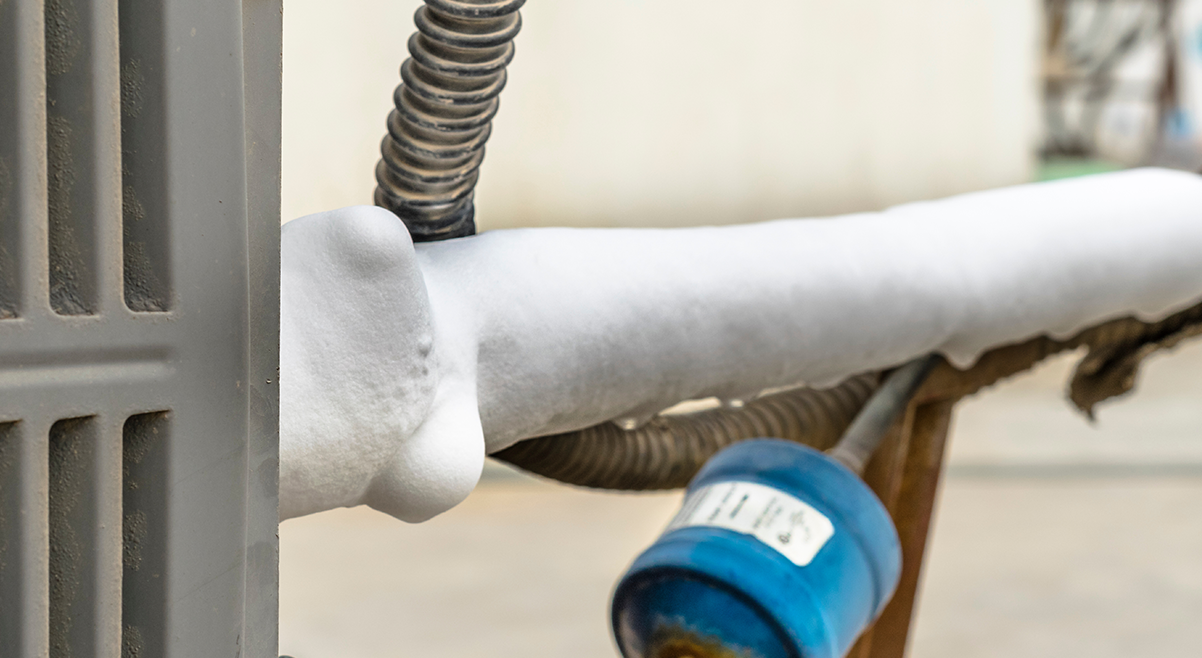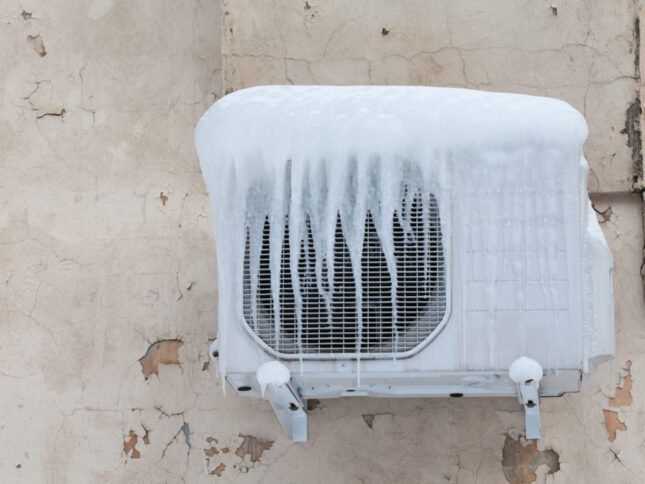Identifying a Frozen AC Pipe - Efficient Solutions for Home Air Conditioning Systems
Identifying a Frozen AC Pipe - Efficient Solutions for Home Air Conditioning Systems
Blog Article
Have you been searching for tips on How can I fix an air conditioner’s frozen pipe??

Introduction
Discovering that your AC pipe is iced up can be concerning, specifically during warm summer season when you count on your a/c one of the most. Comprehending what to do in such a circumstance is essential to avoid further damages to your cooling system and ensure your convenience indoors.
Understanding the Causes
A number of variables can contribute to the cold of an AC pipeline. Comprehending these reasons can aid you address the issue properly.
Absence of Airflow
One usual root cause of an icy AC pipeline is inadequate airflow. When the air flow over the evaporator coil is limited, it can create the coil to drop below freezing temperature level, causing ice development on the pipe.
Low Refrigerant Levels
Inadequate refrigerant levels in your AC system can additionally result in an icy pipeline. Reduced refrigerant degrees can cause the pressure in the system to go down, causing the cold of dampness on the evaporator coil.
Cold Weather Conditions
In cooler environments, freezing temperature levels outside can contribute to the cold of air conditioner pipelines. If your air conditioning unit is not effectively protected or if there are leakages in the ductwork, cold air can penetrate the system, causing the pipe to freeze.
Dirty Air Filters
Unclean or blocked air filters can limit airflow in your air conditioner system, bring about various issues, including an icy pipe. It's vital to change or clean your air filterings system consistently to make sure proper air movement and prevent ice buildup.
Indications of a Frozen Air Conditioner Pipe
Recognizing the indications of a frozen AC pipe is important for punctual activity.
Minimized Airflow
If you observe a substantial decrease in air movement from your vents, it might indicate a frozen pipe.
Ice Buildup on the Pipe
Noticeable ice accumulation on the cooling agent line or the evaporator coil is a clear indicator of an icy AC pipe.
Weird Sounds from the Unit
Unusual sounds, such as hissing or gurgling, coming from your a/c system can signify that there's ice present on the pipeline.
Immediate Actions to Take
When confronted with an icy AC pipe, it's vital to act quickly to avoid additional damage to your cooling system.
Switching off the AC
The initial step is to turn off your a/c to stop the system from running and aggravating the concern.
Looking for Blockages
Examine the location around the indoor device for any kind of obstructions that might be blocking air flow, such as furnishings or drapes.
Thawing the Pipe
You can use gentle approaches like putting towels soaked in cozy water around the frozen pipe to assist thaw it gradually.
Safety nets
Taking safety nets can assist prevent future events of a frozen air conditioner pipeline.
When DIY Methods Fail
If your efforts to thaw the pipeline or address other concerns are unsuccessful, it's time to call in an expert.
Importance of Hiring a Professional HVAC Technician
A qualified HVAC technician has the knowledge and devices required to detect and repair problems with your a/c system securely and properly.
Regular Maintenance Checks
Schedule routine upkeep consult an expert HVAC service technician to ensure that your a/c system is running efficiently.
Altering Air Filters
Frequently change or clean your air filters to prevent airflow restrictions and preserve ideal efficiency.
Insulating Exposed Pipes
If your a/c pipelines are exposed to chilly temperature levels, consider insulating them to avoid cold throughout cold weather.
Seeking Professional Help
If DIY techniques fail to deal with the concern or if you're unclear concerning how to continue, it's best to seek aid from a qualified HVAC professional.
Conclusion
Managing a frozen AC pipeline can be an aggravating experience, however knowing exactly how to react can assist lessen damage and restore convenience to your home. By comprehending the reasons, acknowledging the indicators, and taking punctual action, you can efficiently attend to the problem and avoid future occurrences.
What to Do If Your AC Line Is Frozen
Make Sure All Supply and Return Air Vents Are Open
If you notice problems with airflow, the first thing you should do is check your supply and return vents. Supply vents distribute clean, conditioned air throughout your home. As this air becomes stale, it’s pulled into the return vent, where it’s reconditioned before being sent back out through the supply vent.
When these vents are closed, air won’t flow in the home. Before examining your AC, check the vents in every room and ensure they’re all open.
Check for a Dirty Air Filter
Another possible cause of limited airflow is a dirty air filter. Your air conditioner’s filters catch elements you don’t want to breathe in, such as dirt and dust. Over time, filters can become clogged, ultimately blocking air from flowing in and out. The lack of airflow can then cause the entire coil to freeze and will completely restrict any air from moving through it. The AC may need to be powered off for one to two days to allow the coil to thaw after replacing the filter to allow proper functioning of the unit. This debris can also accumulate on your AC’s evaporator coil, requiring a more serious repair. In general, air filters should be cleaned regularly (about every two weeks).
Assess Your Outdoor Unit
In addition to checking your AC, assessing the outdoor unit is a good idea. Also known as the condensing unit, it works with your interior unit to release heat outside. An issue with the outdoor unit can result in rising internal temperatures.
Overgrown Shrubs or Clogged Leaves
From leaves and twigs to shrubs and debris, there’s no shortage of outdoor elements that can accumulate around your condensing unit. When these elements get lodged inside the unit, they can block airflow. Fortunately, removing the blockage can solve the problem.
Sounds of a Broken Fan
Shrubs and leaves aren’t the only things that can impede your outdoor unit’s airflow. If the fan is broken, the unit won’t be able to properly get rid of heat — which means the internal temperature won’t go down. First, make sure the fan is spinning. If it is, check for the following sounds of a broken fan:
Buzzing Rattling Screeching Hissing Clicking Preventative Measures
Nobody wants to deal with a frozen AC line. In addition to causing problems with your air conditioner, they require professional repairs. On the bright side, there are preventative measures you can take to help ensure this issue doesn’t arise in the first place.
https://www.coopergreenteam.com/blog/what-to-do-if-ac-line-frozen

I am very eager about Air Conditioner Frozen? How To Fix your Frozen AC Line and I hope you enjoyed the blog post. Those who enjoyed reading our post plz do not forget to pass it around. Thanks so much for taking the time to read it.
Course Detail Report this page